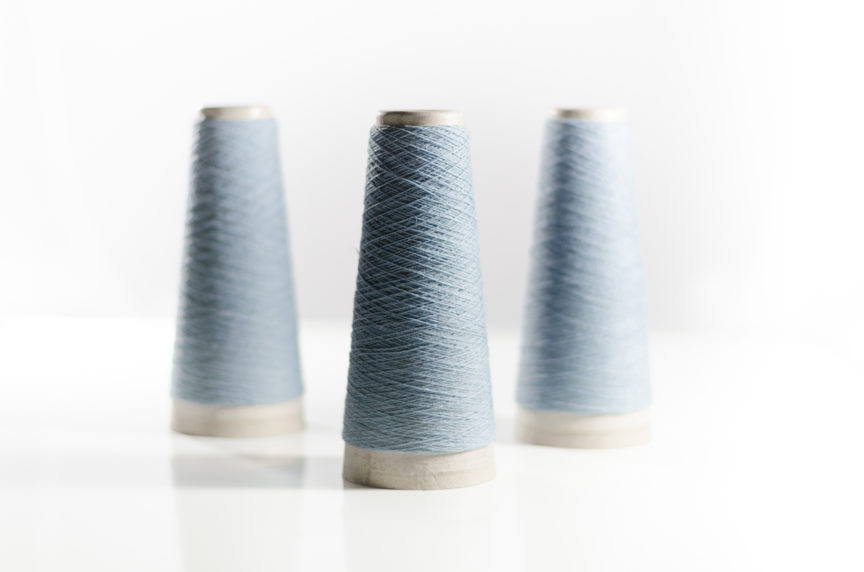There is a new blend on the block that could be a game changer for international fashion designers. Perino by Woolyarns is a luxury blended yarn using fibre from the New Zealand brushtail possum. It’s created in a family owned yarn manufacturing mill in New Zealand and incorporates the softness of cashmere and silk with the warmth and low pilling qualities of New Zealand brushtail possum down, all while contributing to the preservation of unique New Zealand wildlife. Perino is providing designers the opportunity to look beyond 100% cashmere for high quality yarn that benefits the wearer as well as the environment.
What is Perino?
Situated just outside of New Zealand’s capital city of Wellington, Woolyarns is a family owned business that started in 1944. They are dedicated yarn engineers, with a focus on creating new and innovative blends. Perino blends were in development for 8 years, and thus far has been well received by visitors to New Zealand, excited by the luxurious, warm fabrics that have a strong New Zealand story.
Due to the short staple fibre of Brushtail Possum, Woolyarns blends the fibre with merino or cashmere and silk, which act as a carrier through the spinning process. This creates a balance between the properties the fibres have, to make fabric with luxuriously soft handle, breathability and warmth. A small amount of Nylon has been introduced into some blends of Perino yarns so finished fabric has increased recovery allowing the fabrics to hold their shape for longer.
What are the unique qualities of Perino yarn?
Currently the Perino collection is made up of four blends, so designers have options to find a yarn that fits their brand, design and budget. Cirrus yarn is developed for luxe high end garments, consisting of 40% cashmere, 40% brushtail possum down and 20% mulberry silk and is the lightest and softest of the four blends. The Nimbus yarns are still targeted toward top end luxury and consist of 65% fine merino fibre mixed with 25% brushtail possum down and 10% mulberry silk. The Cumulus and Stratus blends are both made up of fine merino, brushtail possum and nylon in differing levels. These two blends create nice alternative yarns that, with the addition of nylon gives the finished fabric strength, recovery and contribute to a lower cost price.
Brushtail possum fibres have a hollow structure, which traps air in the fibre’s core, creating a barrier between the garment and wearer from the external cold. Woolyarns fur manufacturing process maintains the natural properties of the fibre, including the breathability and water resistance. Fabric made from Perino yarns incorporate qualities from various fibres and are soft, lightweight and comfortable.
Cashmere vs Perino – What is the difference?
Originally from the Kashmir region in northern India, cashmere fibre is now predominantly farmed in China, Mongolia, Nepal, Pakistan and Iran. The fibre is removed by combing the goat during the natural shedding period in spring, then processed to remove the coarser guard hairs. Manufacturers use the resulting soft undercoat to develop yarns and fabrics that are soft to touch, lightweight and adapt naturally to the humidity in the air. Cashmere has excellent drape and handle, however the fibres when compared to fine wool, are weaker and more susceptible to abrasion and pilling.
Perino by Woolyarns builds on the properties of cashmere – adding qualities from brushtail possum fibre, silk and fine merino to complement those of cashmere and increase it’s performance. The addition of possum down contributes to a lightweight, low pilling and no odor fabric that is 35% warmer than 100% cashmere fabric of the same weight and knit structure.
How does Perino help preserve New Zealand’s wildlife?
The brushtail possum was introduced to New Zealand in the 19th century and numbers quickly grew out of control. The brushtail possum has no natural predators in New Zealand and combined with abundant food sources there are now 30-50 Million of these pests country-wide. The brushtail possums consume approximately 21,000 tonnes of vegetation every night, stripping native trees of bark, leaves and eating the regenerative seedlings. They invade native and endangered bird species’ nests, eating live young and eggs, including the beloved national icon, the Kiwi.
New Zealand’s Department of Conservation (DOC) have to continually work to control the possum numbers. Fur trappers work alongside DOC to allow the byproduct of possum fibre to be put to good use. The laws around trapping possums in New Zealand are regulated to ensure there is no unnecessary stress put on the pests that live wild in the forests of New Zealand. DOC says having trappers reduce possum numbers in the buffer zones around DOC targeted pest control areas can delay possum re-invasion by two to three years. DOC currently spends more than $10 million a year on possum control so any delay in re-invasion is not only financially beneficial, but gives precious extra time for New Zealand’s native plants and birds to recover. A full article on the subject can be read here on the Department of Conservation’s website.
Feel the touch of Perino
Perino by Woolyarns is a brand developing luxury blended yarns for international fashion designers. They have refined their internal processes for eight years to create brushtail possum blended yarns that build on the luxurious properties of cashmere. They are commited to customer service and are contributing to conservation success in New Zealand. The unique collection of Perino by Woolyarns yarns create cloud-like, floating fabrics for the senses. The garments produced with these yarns have a distinctive halo like surface layer, which with almost no pilling, leaves an impression to last a lifetime.
